Sourav Pan
Transcript
What is Binary Fission?
Binary fission is a type of asexual reproduction where a single cell divides into two identical daughter cells.
It’s a fundamental process in prokaryotes and some eukaryotes.
Unlike sexual reproduction, binary fission doesn’t involve the fusion of gametes.
Instead, a parent cell simply grows to approximately twice its size and then splits into two genetically identical cells.
The dividing cell forms a ring structure in the middle, which will become the division site.
The cell then pinches inward at the division site, eventually splitting into two identical daughter cells.
Binary fission is characterized by producing genetically identical offspring, making it an efficient method of reproduction for single-celled organisms.
In summary, binary fission is the primary method of reproduction for prokaryotes and some eukaryotes, allowing rapid population growth under favorable conditions.
Let’s examine genetic replication in prokaryotic binary fission.
The first step in binary fission is the replication of the cell’s genetic material.
In prokaryotes, this involves duplicating the circular DNA molecule that makes up the nucleoid.
Replication begins at a specific site called the origin of replication.
Let’s examine the replication process more closely.
DNA replication begins with the enzyme helicase separating the two strands of the DNA double helix.
DNA polymerase then synthesizes new complementary strands using each original strand as a template.
As replication proceeds, the two strands separate and each serves as a template for synthesizing a new complementary strand.
Once replication is complete, there are two identical copies of the original DNA.
This process ensures that each daughter cell will receive a complete copy of the parent cell’s genetic information.
Genetic replication is crucial for maintaining genetic continuity through generations of cells.
After DNA replication, the bacterial cell contains two complete copies of its chromosome.
The two copies of the chromosome begin to separate and move toward opposite ends of the cell.
This movement ensures that when the cell divides, each daughter cell will contain one complete copy of the genetic material.
Unlike in eukaryotic mitosis, this process of chromosome separation in prokaryotes doesn’t involve a spindle apparatus.
This direct method of chromosome separation in prokaryotes is simpler but still remarkably efficient.
Irregular binary fission is characterized by cell division occurring along any random plane.
This type of binary fission is commonly observed in organisms like amoeba.
Unlike other types of binary fission, there is no fixed axis of division.
The cell can divide along any random plane, resulting in two daughter cells.
For a second example, let’s observe another amoeba undergoing irregular binary fission.
This time, the division occurs along a completely different plane.
The randomness of the division plane is a defining characteristic of irregular binary fission.
Irregular binary fission stands out from other types because the cell can split in any direction.
The division plane can form horizontally, vertically, diagonally, or in any other orientation.
To summarize, irregular binary fission is characterized by division occurring along any random plane with no fixed axis, commonly observed in amoeba, resulting in genetically identical daughter cells.
In transverse binary fission, cells divide along their transverse axis, which runs perpendicular to the length of the cell.
The process begins with DNA replication in the nucleus.
A ring of FtsZ proteins forms at the center of the cell along the transverse axis.
As the ring constricts, it pinches the cell membrane inward, eventually dividing the cell into two daughter cells.
The result is two daughter cells positioned side by side, with the division plane having formed perpendicular to the long axis of the original cell.
Let’s summarize the key characteristics of transverse binary fission.
Longitudinal binary fission is a type of cell division where the cell divides along its length.
This division pattern is commonly seen in flagellated protists, such as Euglena.
Let’s observe how a Euglena cell undergoes longitudinal binary fission.
We start with a single Euglena cell. Notice its elongated shape and the flagellum at one end.
First, the DNA is replicated and the nucleus divides, creating two identical sets of genetic material.
Next, the FtsZ protein, shown in yellow, forms along the longitudinal axis of the cell, creating a division plane.
In longitudinal binary fission, the division begins at one end of the cell and gradually proceeds along its length.
Finally, the division completes, resulting in two daughter cells positioned end to end.
This end-to-end positioning of the daughter cells is a characteristic feature of longitudinal binary fission.
Oblique binary fission is a type of cellular division where the cell splits at an angle that is neither perfectly transverse nor perfectly longitudinal.
This type of division is observed in organisms like ceratium, a genus of dinoflagellates with distinctive horn-like projections.
In oblique binary fission, the division plane forms at an angle to the cell’s main axis.
The FtsZ protein forms a ring that constricts the cell, gradually separating it into two daughter cells along the oblique division plane.
Oblique binary fission creates a unique pattern of separation that distinguishes it from other types like transverse and longitudinal fission.
Because the division plane forms at an oblique angle to the cell’s axis, the resulting daughter cells have a unique orientation compared to those produced by other fission types.
A key difference between binary fission and mitosis is the types of cells in which they occur.
Binary fission takes place in prokaryotes – which include bacteria and archaea.
These simple cells lack a nucleus, with DNA floating freely in a region called the nucleoid.
In contrast, mitosis only occurs in eukaryotic cells, which include plants, animals, fungi, and protists.
Eukaryotic cells have a membrane-bound nucleus and other specialized organelles.
While prokaryotes divide through binary fission, eukaryotes undergo the more complex process of mitosis.
Some simple eukaryotes like certain protists can also undergo binary fission, though their cellular structure is more complex than prokaryotes.
The presence of a nucleus and membrane-bound organelles fundamentally changes how cells divide.
During cell division, eukaryotic and prokaryotic cells employ different mechanisms to separate their genetic material.
Let’s compare how chromosomes are separated in mitosis versus binary fission.
Eukaryotic cells perform mitosis, while prokaryotic cells undergo binary fission.
During mitosis, eukaryotic cells form a spindle apparatus made of microtubules.
This complex structure helps organize and precisely move the chromosomes during cell division.
In contrast, prokaryotes don’t form a spindle apparatus during binary fission.
Instead, the replicated chromosomes attach to the cell membrane.
As the prokaryotic cell grows in size, the attached chromosomes are pulled apart.
This fundamental difference in chromosome separation mechanisms reflects the structural and evolutionary differences between eukaryotic and prokaryotic cells.
While both binary fission and mitosis result in two identical daughter cells, they serve different primary purposes.
Binary fission is primarily a reproductive mechanism for single-celled organisms.
It allows bacteria and other unicellular organisms to rapidly increase their population through duplication.
Mitosis, however, serves multiple purposes in multicellular organisms.
First, it enables growth by adding more cells to tissues and organs.
Second, it allows for tissue repair by replacing damaged or dead cells.
And third, in some species, mitosis enables asexual reproduction, where an entire organism can reproduce without a mate.
To summarize, binary fission primarily serves as a reproductive mechanism in single-celled organisms, while mitosis serves multiple purposes in multicellular organisms including growth, repair, and sometimes asexual reproduction.
One remarkable aspect of binary fission is its exceptional speed.
Under optimal conditions, some bacteria can complete the entire process in as little as twenty minutes.
This rapid reproduction allows bacterial populations to grow exponentially when resources are abundant.
This rapid reproduction explains why bacterial infections can develop so quickly in the body.
Environmental factors significantly affect the rate of binary fission in bacteria.
Several key environmental factors influence how quickly bacteria divide. These include temperature, pH, nutrient availability, and the presence of toxins.
Temperature is a critical factor. Most bacteria have an optimal temperature at which they divide most rapidly. For example, many human pathogens divide optimally at around 37 degrees Celsius, while division slows significantly at lower or higher temperatures.
At optimal temperatures, bacteria form the FtsZ protein ring efficiently and complete binary fission rapidly.
pH level is another crucial factor. Most bacteria thrive in neutral environments around pH 7, although some specialized species can adapt to acidic or basic conditions.
Nutrient availability directly affects bacterial growth rate. In nutrient-rich environments, bacteria multiply rapidly, forming large colonies. When nutrients are scarce, division slows dramatically.
Toxins, such as antibiotics or heavy metals, can severely inhibit binary fission. These substances may interfere with critical cellular processes, including DNA replication or FtsZ ring formation.
Different bacterial species have evolved to thrive in specific environmental conditions. Thermophiles prefer high temperatures, acidophiles thrive in acidic environments, and psychrophiles prefer cold temperatures.
In summary, binary fission occurs most rapidly when all environmental factors are at their optimal levels for the specific bacterial species.
Bacterial growth through binary fission follows a predictable pattern known as a growth curve.
This curve includes four distinct phases that characterize how bacterial populations change over time.
The lag phase is a period of adaptation. Bacteria adjust to their new environment, synthesize enzymes, but don’t immediately increase in number.
During the log phase, also called exponential growth, bacteria divide rapidly through binary fission. The population doubles with each generation as conditions are optimal.
The stationary phase represents an equilibrium where the rate of bacterial growth equals the rate of death. Nutrients become limited and waste products accumulate.
The death phase occurs when essential nutrients are exhausted and toxic waste products accumulate. The death rate exceeds the growth rate, leading to a rapid decline in the viable bacterial population.
Understanding bacterial growth curves is crucial in multiple fields. In medicine, it helps determine when antibiotics are most effective. In food safety, it helps predict shelf life. In biotechnology, it determines optimal harvesting times for bacterial products.
The predictable pattern of bacterial growth provides essential insights for controlling harmful bacteria and maximizing the benefits of beneficial ones.
While binary fission offers organisms a quick and efficient method of reproduction, it comes with several significant disadvantages.
The first major disadvantage is the lack of genetic recombination. Since binary fission is asexual reproduction, there’s no mixing of genetic material from different individuals.
This means that each offspring is a genetic clone of the parent cell, resulting in a population of genetically identical individuals.
The second major disadvantage is limited adaptability. With reduced genetic diversity, populations created through binary fission struggle to adapt to changing environments.
When the environment changes, genetically identical individuals tend to respond the same way. If that environment becomes unfavorable, the entire population may be at risk.
The third disadvantage is that harmful mutations are readily propagated. When a harmful mutation occurs in a cell reproducing by binary fission, that mutation is passed to all of its offspring.
Despite these disadvantages, many organisms that primarily reproduce through binary fission have evolved mechanisms for occasional genetic exchange.
These mechanisms include bacterial conjugation, where genetic material is transferred between cells, and transformation, where cells can take up DNA from their environment.
These processes allow for some genetic diversity within populations that primarily reproduce asexually, helping to mitigate the disadvantages of binary fission.
Binary fission plays a crucial role in the development of antibiotic resistance.
It starts with a single bacterium that has acquired a resistance gene through mutation or horizontal gene transfer.
When this bacterium undergoes binary fission, it replicates its DNA, including the resistance gene.
The cell then divides into two identical daughter cells, both carrying the resistance gene.
Through repeated rounds of binary fission, a population of bacteria develops that includes both resistant and non-resistant individuals.
When antibiotics are introduced, they create a selective pressure. Non-resistant bacteria die, while resistant bacteria survive.
The surviving resistant bacteria continue to reproduce through binary fission, creating a predominantly resistant population.
This rapid development of antibiotic-resistant bacterial populations creates significant medical challenges.
Through the process of binary fission, antibiotic resistance can spread rapidly in bacterial populations, becoming a major public health concern.
Let’s summarize binary fission, a fundamental biological process.
Binary fission allows single-celled organisms to reproduce asexually through a series of coordinated steps.
First, the cell’s DNA is replicated to create two identical copies of genetic material.
Next, the chromosomes separate and move to opposite sides of the cell.
The FtsZ protein forms a ring at the center of the cell, marking the future division site.
The FtsZ ring contracts, pinching the cell membrane inward until the cell divides into two.
This process results in two genetically identical daughter cells, each capable of living independently.
Binary fission varies across different organisms, with bacteria exhibiting a simpler process than amoebas. The division plane also varies, occurring transversely, longitudinally, or obliquely.
Binary fission represents one of life’s most elegant reproductive strategies. It’s simple yet efficient, producing genetically identical offspring that are essential for microbial growth and survival.
In summary, binary fission highlights the elegant simplicity of one of life’s most basic and essential reproductive strategies.
Study Materials
No study materials available for this video.
Helpful: 0%
Related Videos

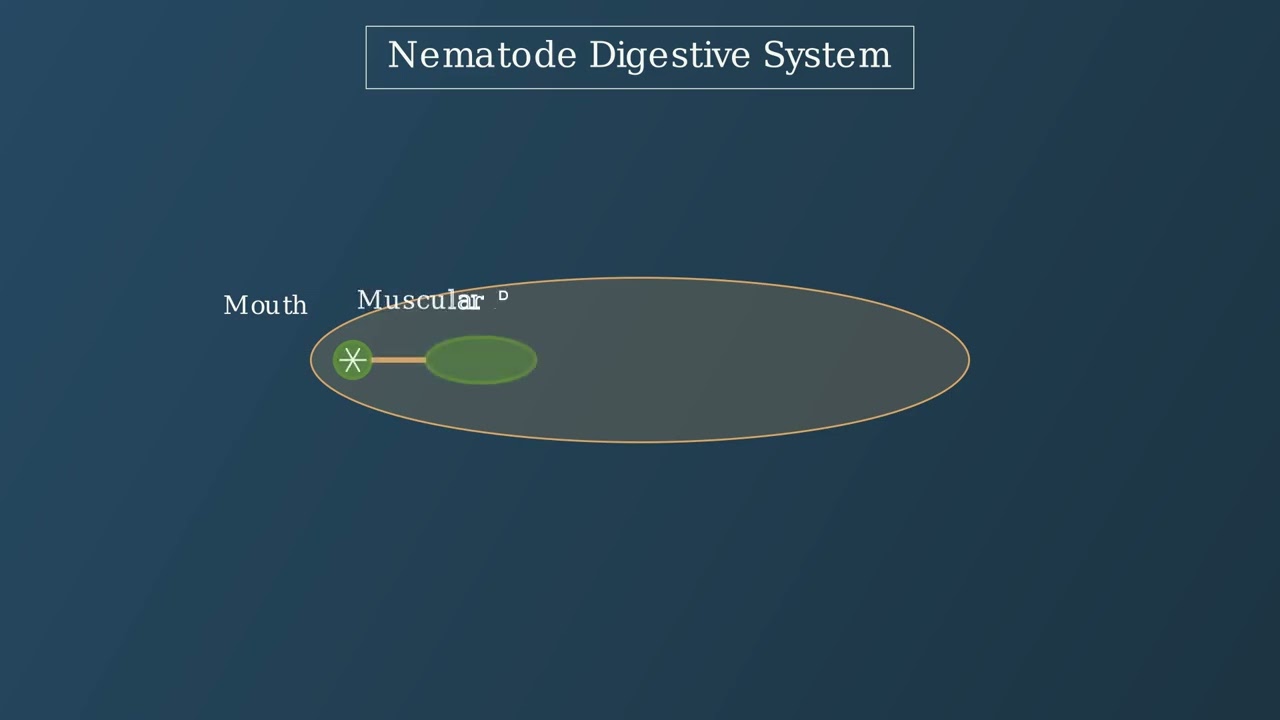

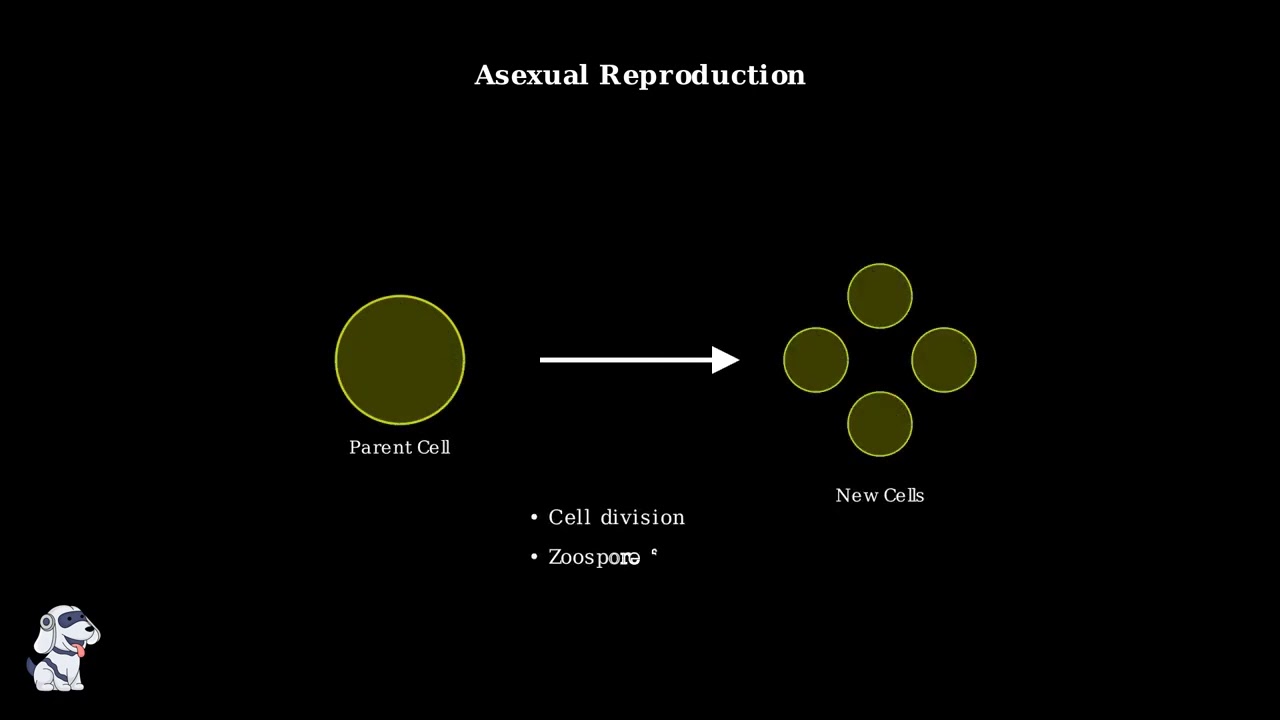
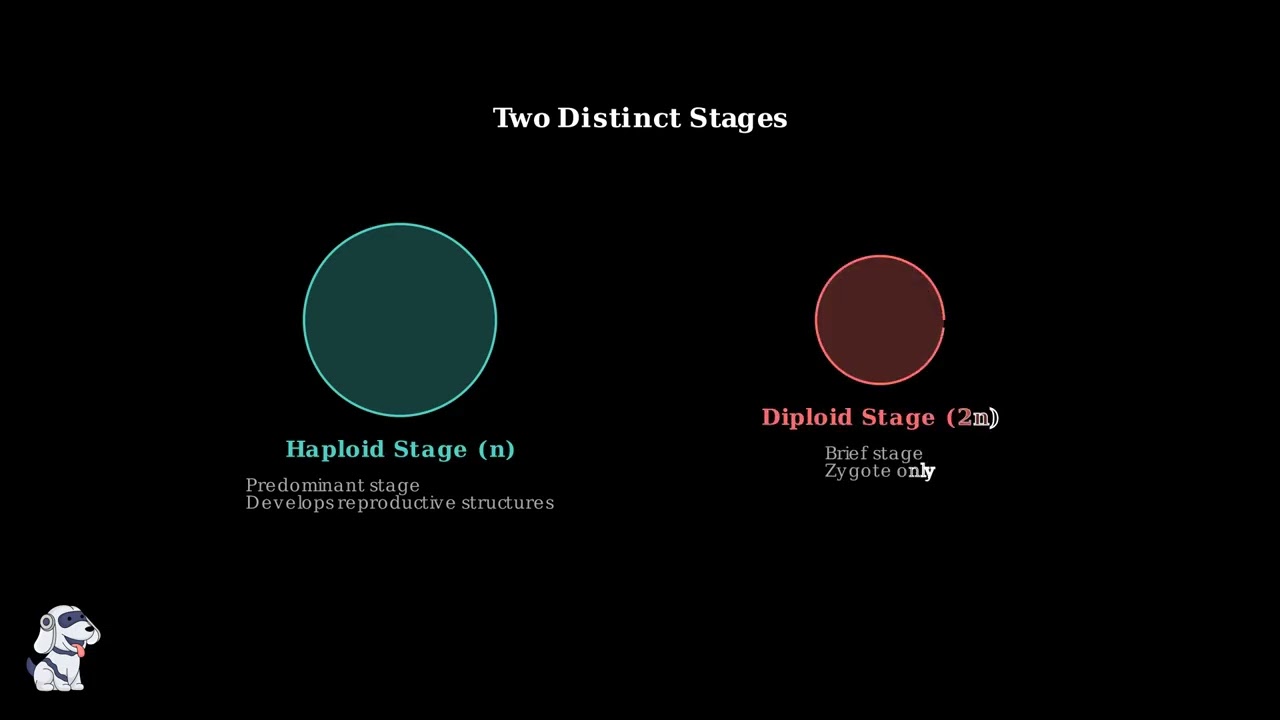
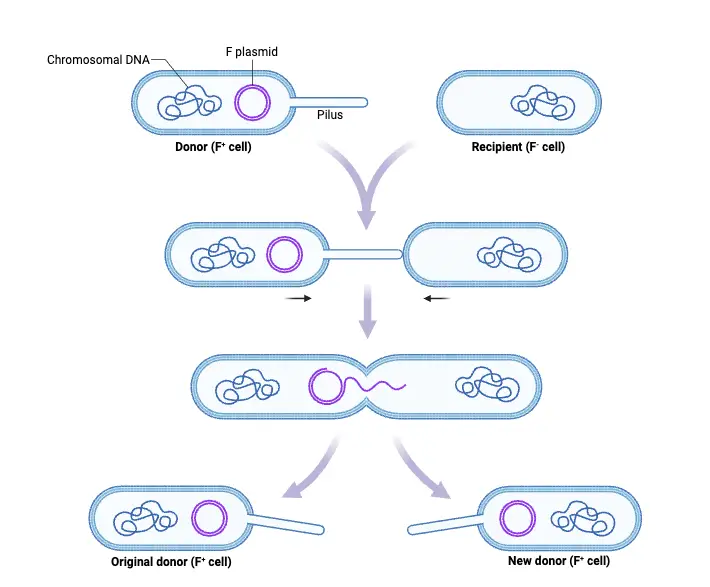
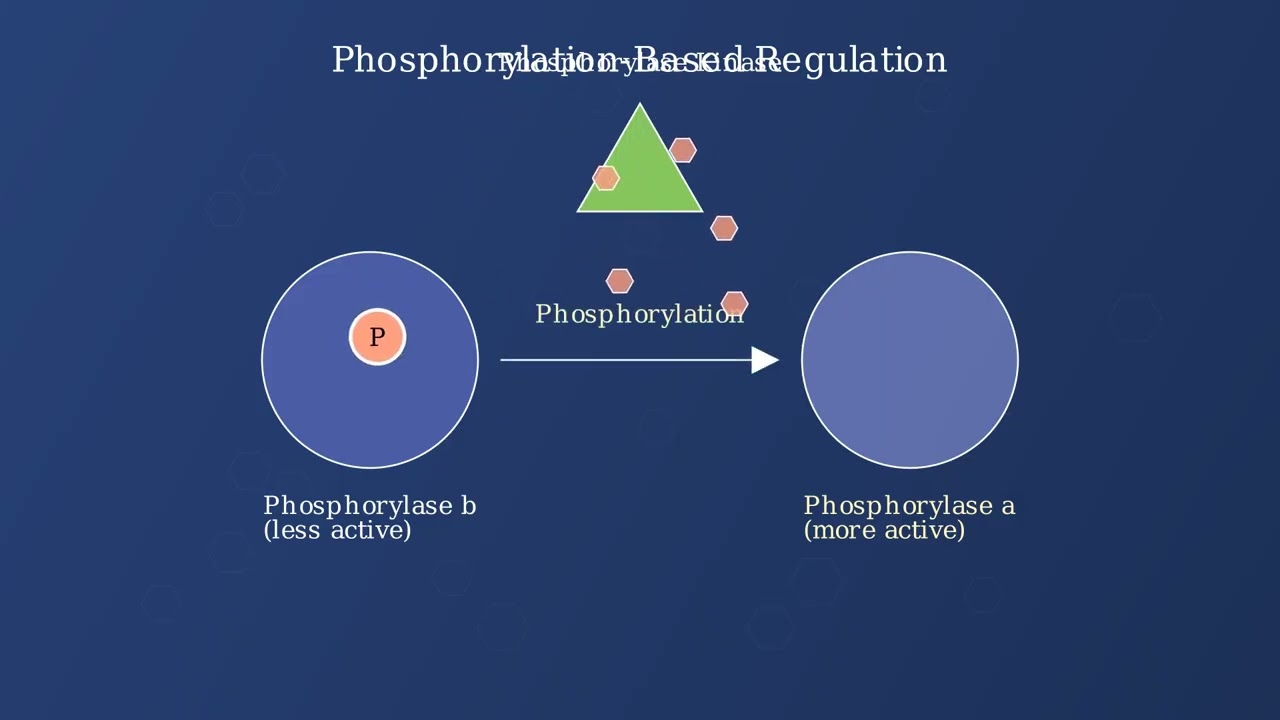
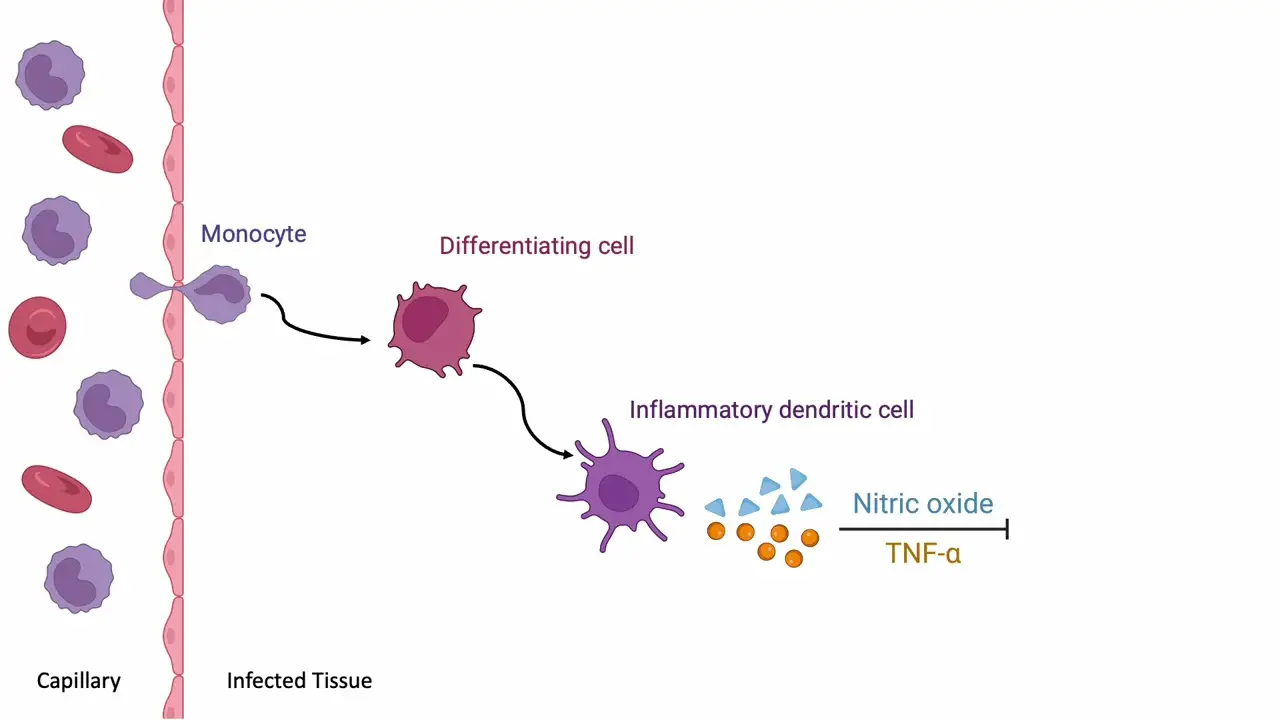
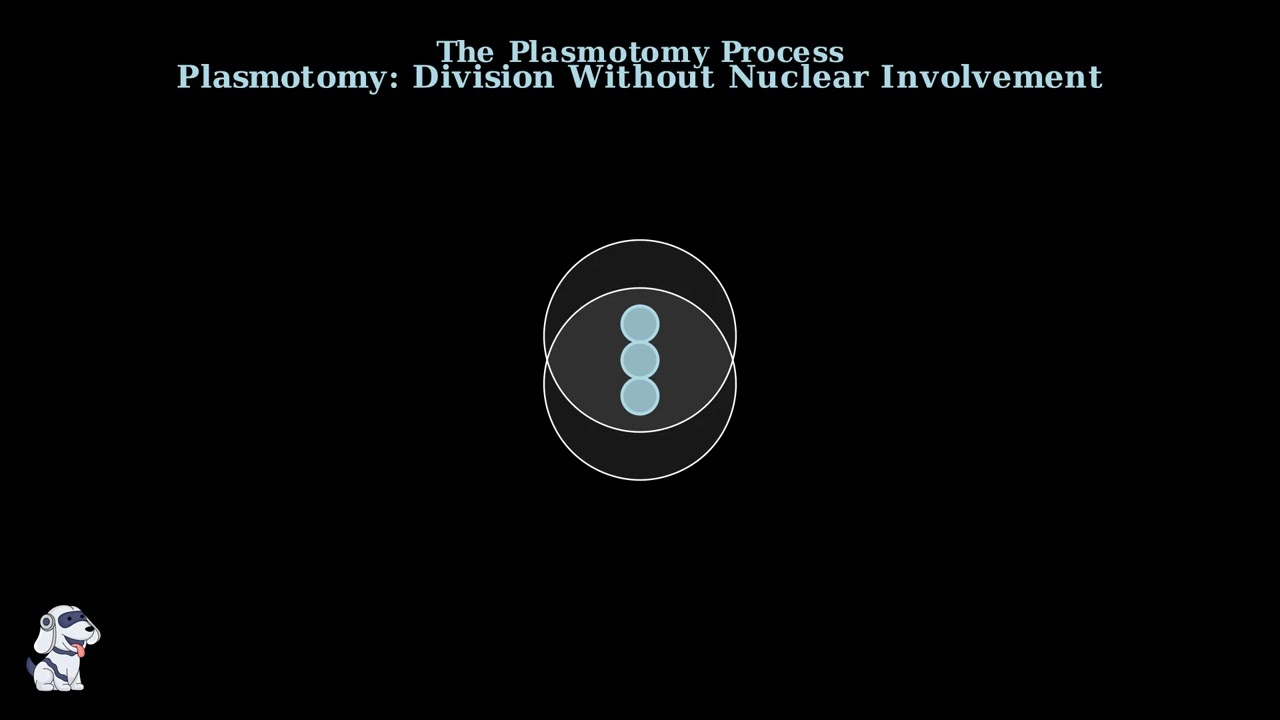

- Text Highlighting: Select any text in the post content to highlight it
- Text Annotation: Select text and add comments with annotations
- Comment Management: Edit or delete your own comments
- Highlight Management: Remove your own highlights
How to use: Simply select any text in the post content above, and you'll see annotation options. Login here or create an account to get started.